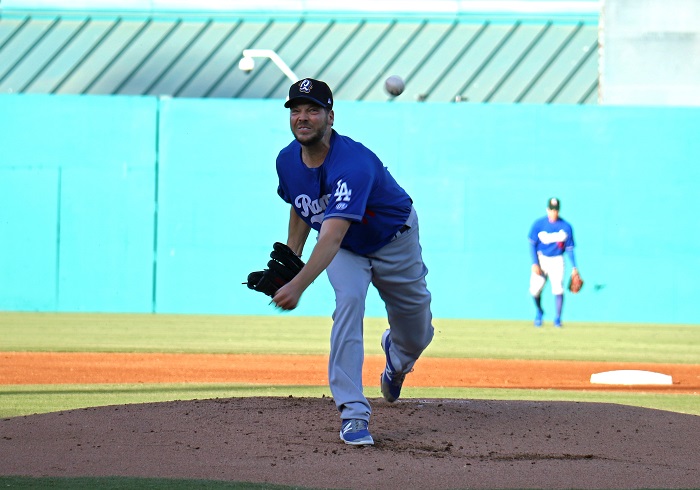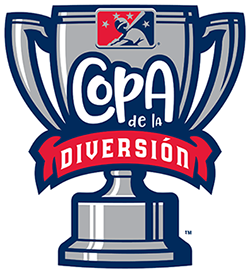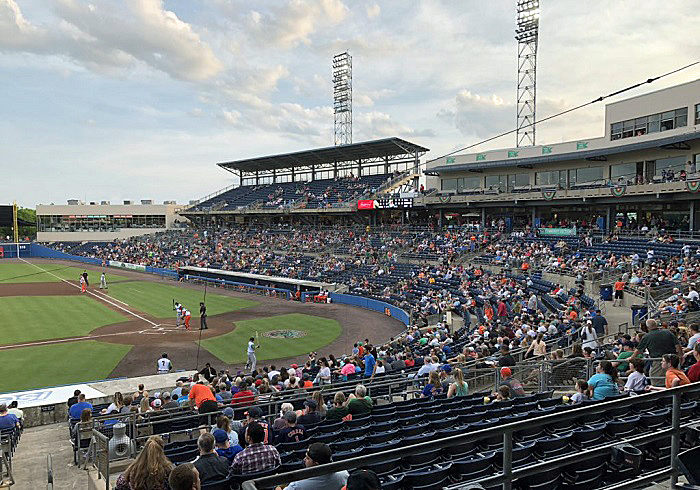Anyone who has been to a Minor League (MiLB) game will tell just how much fun an afternoon or evening at a minor league ballpark can be. Major league fans can check out future MLB stars, get a closer look at optioned players from their favorite teams, and occasionally even catch a glimpse at rehabbing players from those teams. Casual spectators or even non-baseball fans can enjoy inter-inning entertainment and kid-friendly activities. But for many, myself included, attending a minor league game is about following and rooting for a team … even if that team is constantly at risk of losing it’s star players to the next level or (hopefully) even to “The Bigs,” as they say.

According to a recent ESPN sports poll, 18.2 million Hispanic and Latin Americans in the U.S. fall into this latter category of fans. That’s about 17.2% of MiLB’s entire fan base. These findings were corroborated by a recent Uber driver of mine who shared with me stories about picking up Latin American fans who had flown or driven great distances just to attend minor league baseball games.
It only makes sense then that MiLB would introduce an initiative to welcome, engage, and recognize such a loyal demographic of fans. Now in its second year, Copa de la Diversion, or “Fun Cup” is a campaign that was designed to do just that. Here’s how it works: for a select few games throughout the season, participating MiLB teams, ranging from Triple-A all the way down to the Short Season Rookie League, take on a secondary Spanish-language team identity for an afternoon or evening of festive fun.

Among the teams who have participated since the 2018 inaugural season are the Dodgers’ Triple-A, Double-A, and Advanced Single-A teams. The Oklahoma City Dodgers play as the “Cielo Azul” (Blue Sky), the Tulsa Drillers as “Los Petroleros de Tulsa” (The Oilmen), and the Rancho Cucamonga Quakes as the “Temblores” (Tremors).
Teams that participated in the 2018 season saw a 126% increase in attendance from the same game dates in 2017, and a 24.4% increase in attendance from that of non-Copa games that same season. Furthermore, sales of Copa-specific merchandise have shot through the roof with many MiLB teams enjoying a retail revenue boost of several hundred percent. The success of the campaign is further exemplified by the additional 39 teams that joined the program for the 2019 season bringing the number of participating teams from 33 to 72. A complete list of Copa teams can be found here.
So what’s it like to attend a Copa de la Diversion game? Quite frankly it’s a blast. I recently had the opportunity to attend the first Copa game of the Norfolk Tides who, for the occasion, became the “Pajaritos (Baby Birds) de Norfolk,” a direct nod to their Major League affiliate, the Baltimore Orioles.
From the moment I walked into Harbor Park I could tell that this game would be different. Enthusiastic pregame announcements where being delivered in Spanish. At home plate, a woman was performing a traditional Latin American dance (I won’t pretend I can identify the country of origin) to music (I won’t pretend I can identify the genre) that played throughout the stadium, and was even joined at one point by Venezuelan-born Baltimore Orioles outfielder Anthony Santander.

(Photo credit – Max Letaconnoux)
What was most exciting about the evening, however, was the attendance and energy level of the crowd, both of which were higher than I had seen at any Tides game before. One of the things I love most about Dodger fans is how good we are at filling up seats, and how easy it is for us to start a “Let’s go Dodgers” chant, even at an away game. This level of enthusiasm is unfortunately harder to find in minor league baseball but the first Pajaritos game was different. Seats were packed and cheers were loud.
That night the Pajaritos beat “los Caballeros de Charlotte” (the Charlotte Knights), fueled perhaps by the excitement of the occasion to make a last-minute comeback in the bottom of the ninth. It was the most fun I have had at a minor league game so far and I hope the success of Copa de la Diversion encourages the remaining MiLB teams to join the program next year so that other fans get to enjoy the same experience.
While it is hard to imagine a major league team ever adopting a secondary identity, it looks like the Dodgers have taken a page from the same book by introducing Mexican Heritage Night, and other more regular events such as Viva Los Dodgers and Dia De Los Dodgers.
Baseball is great. Let’s keep encouraging people of all ethnicities to come enjoy it with us.
* * *
Editor’s Note: ThinkBlue LA welcomes Max Letaconnoux as our newest staff writer. Max was born, raised, and still lives in New York and became a Dodger fan during the 2018 season when the team was in town to play the New York Mets at Citi Field. He is also a huge fan of minor league baseball and can often be found at Harbor Park Stadium, home to the Norfolk Tides, the Triple-A affiliate of the Baltimore Orioles. Welcome to the TBLA family, Max!
* * * * *




 May 14th, 2019 at 8:00 am
May 14th, 2019 at 8:00 am  by Max Letaconnoux
by Max Letaconnoux  Posted in
Posted in 

https://t.co/nLm1StHu5q
Great stuff Max. Thanks!
I love minor league baseball. My experience — seating is much less expensive, yet closer to the players; fans are more engaged, and there are many more kids running around than any major league game. But “Copa de la Diversion” is clearly targeting a specific ethnic group and ignoring other groups. Why not the same consideration throughout the season to recognize the Negro Baseball Leagues; the All-American Girls Professional Baseball League; etc., etc. According to a 2013 Nielsen report, approximately 30% of MLB fans are femaie — there is a demographic to target. Not trying to be argumentative, just an observation.